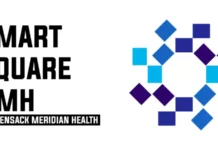Many volunteers around the world are dedicated to raising funds for cancer research and charities in the fight against cancer. Thousands of people work in the market as caregivers, prescribing, searching, manufacturing or diagnosing drugs. Big companies are investing their fortune in cancer research. After a long period spent spending billions of dollars in particular what revealed the analysis of cancer? Cancer research foundation UK has helped many patients since it’s inception.
We have seen frequent advances in our understanding of cancer but a slight improvement in treatment. Recent research on cancer began in the 1940s and 1950s when researchers isolated elements that killed cancerous cancer cells in a petri dish, or perhaps cancer cells in the blood of laboratory mice. Early successes were identified in the frequency of chemotherapy and were widely exposed to the media, although they only apply to up to 5% of cancer treatments. The advantages of cancer research foundation UK are unlimited.
The service of humanity through the solution of serious illnesses has a place of prestige, there are many compliments, in addition to the Hollywood atmosphere required in such things. Cancer research is indeed a remarkable activity, and every time we discover a scientific remedy, more and more recognized, like the HPV 16 experiment, it only applies to cure a small fraction of cancer. The noise in the media is part of the question of how to see cancer. Initial advances were identified in anticipation of a complete cure, a “miracle solution” that would uncover the discoverer of cancer treatment around the world. The concept stems in part from aspirin, the first bullet stumbling magically down the path of pain and diminishing it.
In the 1950s, 60 large and expensive research projects were prepared to evaluate each known substance to determine if it had infected cancer cells. You may recall the findings from Madagascar (Catharansus Roseus), which revealed alkaloids (phenoplast and vincristine) currently used in chemotherapy. Taxol, a treatment for ovarian cancer and breast cancer, is native to the Pacific yew. Treatment for testicular cancer was produced, as well as for small cell lung cancer called “etoposide” from the apple of May. In Jonathan Hartwell’s “Plants for Cancer,” more than 3,000 plants have been identified through health care and folklore solutions to fight cancer. Almost half of them affected cancer cells in a test tube.
When these plants are converted into synthetic drugs, the individual chemicals are virtually isolated, and most of the plant is neglected. The medically active molecules are already cultured and modified until they are chemically unique. The compound is then physically patented, affording a brand name and then tested.
In the first step, you will usually be tested on animals, the next step will determine dosage amounts, and the third step will be tested on people. On the date of approval by the United States Drug Enforcement Administration (FDA) and the Health Product Regulatory Agency (MHRA) in Britain, expenditures for a wholly new property can reach $ 5.1 billion, which must be repaid by the customer.



































































